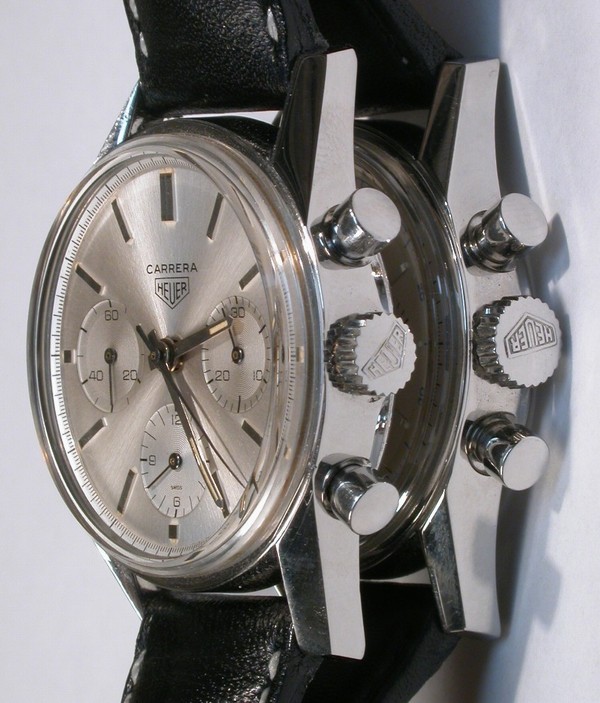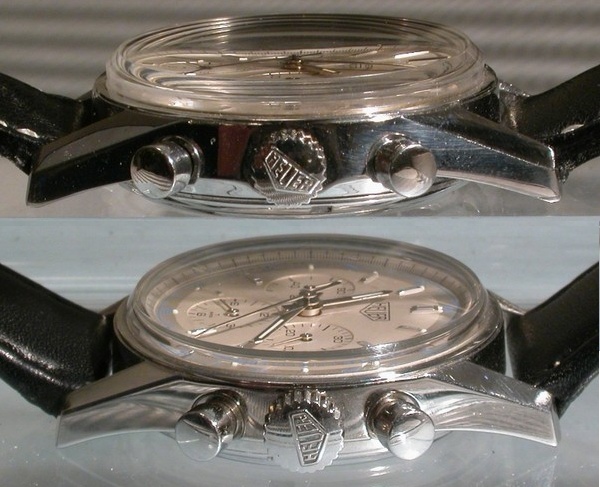|
Vintage (left) and Re-Edition (right) |
||||||||||||||||||
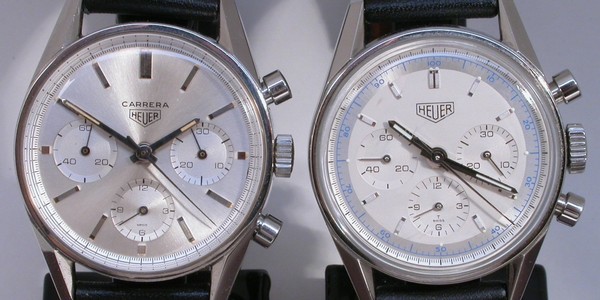 |
||||||||||||||||||
|
The manual-wind Carreras of the 1960's evolved into micro-rotor automatic models in the 1969/1970 time frame, with larger cases required to house the fatter movement and a date replacing the third register. In cases similar to Heuer's Autavia, but having a fixed bezel under the crystal, instead the rotating outer bezel of it's Autavia brethren, the Carrera remained a micro-rotor automatic offering throughout the 1970's, offered in various shapes and colors. . . . In the early 1980's, the Carrera was briefly revamped as a Lemania 5100-based automatic model, until the Carrera name was put on the shelf with the advent of TAG-Heuer. In the late 1990's, TAG-Heuer decided the time was right for a "Classics" line of re-editions, and two of Heuer's design icons were the first two watches to receive the "Classic" treatment -- the Three Register Carrera from the 1960's (shown above) and the unique "Monaco", from the 1970's. The first "Re-Edition" Carreras were all Three-Register models, produced in stainless steel or gold. The main difference for the Re-Edition Carreras was that because Valjoux had long since ceased production of the Valjoux 72, it's arch rival the Lemania 1873 (known by Omega-philes as the base movement for the Speedmaster Moonwatch) was selected as it's replacement. Since the turn of the millennium, TAG-Heuer has produced many variations of the Carrera, most of them based on the ETA 2892/Dubois-Depraz 2030 chronograph module movement. These are easily distinguished by their inclusion of a date window at 4:00 (four o'clock). Recently, TAG-Heuer offered a 40th Anniversary edition Carrera in the style of the 1970's micro-rotor models, with this model known as the "Jack Heuer" Limited Edition. Reviewing 40 years of the Carreras, most collectors would agree that the first three-register Carrera (shown above left) and the first re-edition Carrera (shown above right) represent the finest designs of this chronograph. In this Comparision Table, we have a look at these two models. |
||||||||||||||||||
|
For a comprehensive history of the Carrera, see the History of the Heuer Carrera by Matthias Liebe-Kleymann and Chuck Maddox -- Heuer Carrera Chronographs: A Brief Overview: Then, Now and the Future. For an overview of the vintage models, see the Carrera section of OnTheDash | ||||||||||||||||||
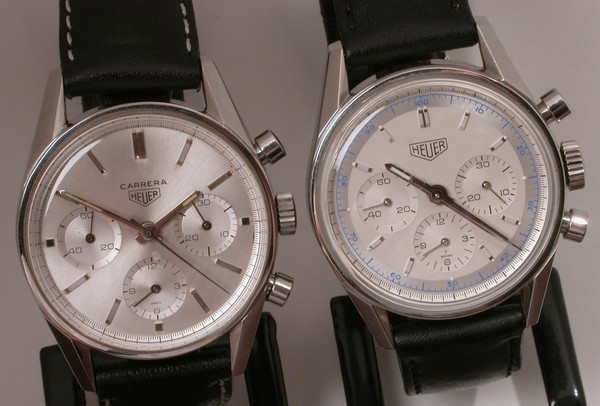 |
||||||||||||||||||
|
The style and size of the two chronographs are almost identical, with the major elements -- case, dial, markers, hands, registers, pushers and color -- being almost indistinguishable. |
||||||||||||||||||
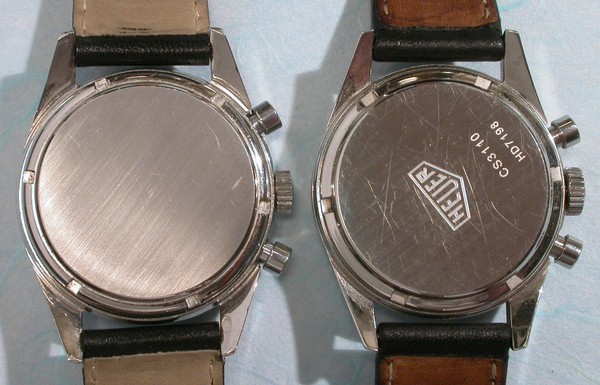 |
||||||||||||||||||
|
Both case-backs are brushed steel, with the Re-Edition bearing the Heuer shield, as well as a model reference number. |
||||||||||||||||||
|
||||||||||||||||||
|
The cases, pushers, crowns & crystals of the two chronographs are virtually identical, in their dimensions and construction. |
||||||||||||||||||
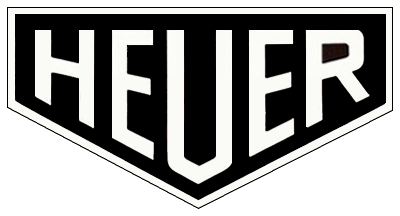 |
||||||||||||||||||
|
Last Updated: 2004.08.03.04- JMS |
||||||||||||||||||
